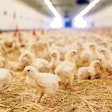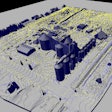In today's competitive environment, with increasing pressure on production, efficiency, and margins, the role of insurance can easily be overlooked by agribusinesses. Afterall, isn't the goal to never have to use it?
Leadership and management may be content to assume they have enough coverage with their existing policies, and unfortunately short-comings don't become apparant until it's too late. Feed & Grain sat down with risk management and property/casualty experts from some of the top agribusiness insurance firms to get a handle on what the ideal policy looks like, how it can work for you, and common insurance pitfalls to avoid.
Essential coverage
According to Steven Simmons, who works in risk management at Nationwide Agribusiness, Columbus, OH, There are four to five policies essential to any agribusiness, including feed mill or grain elevator:
- Comprehensive - This includes your property policy, covers real propery, business proposals, stock, earnings and extra expense
- General liability - This pays and defends their neglegence for people on their premises that fall
- Workers' compensation - Covers employees wages if they get hurt on the job. States will guide you through that
- Auto Policy - covers liability. If you insure your autos, you should at least buy a liability. If you have a fleet this will be a more built-on policy. Do you want anybody driving the truck? That's up to you.
- Umbrella Policy - Provides additional liability on any policy. If you have $1 million coverage on an auto policy and it doesn't cover an incident, this is where the umbrella policy comes in.
The first four policies are essential, but Simmons recommends everyone look into buying an umbrella policy, to cover unexpected large claims.
Additionally, Nationwide Agribusiness' Chuck Hammond notes the importance of a good contingency plan, especially with feed companies that may have one main customers. In case of a recall, a natural disaster or an accident, the facility may be unable to operate and fulfill their customer's needs. A contingency plan will cover the extra expenses such as paying another company to make the feed, added transportation, etc.
Obtaining a quote
We all know the ubiquitous notion that "15 minutes can save you 15%." That may be true for some policies, but getting an accurate quote for an agribusiness can be complicated. John Quirk, director of marketing for Rural Mutual Insurance says "Agribusiness is a specialty line of business and not every company will write insurance coverage on them, so you want to make sure that the company has experience in this line of business. Also not all insurance agents are familiar with the variety of agribusiness exposures out there so again it is important to make sure you are working with someone that is familiar with the exposures."
The process begins by doing research and finding a company with experience insuring agribusiness. Look for a solid, stable company that has years of experience insuring the type of agribusiness that they are in, notes Quirk. "Find out the company's AM Best rating and what type of agribusiness exposures they write," he adds.
Next, the insurance representative will need an application filled out, including an inventory of all their property, building limits, feed, livestock, farm outbuildings, usage of the buildings as well as financial data.
"A comprehensive inventory is very helpful along with a list of employees, type and number of vehicles and what each vehicle is used for in the agribusiness operation," says Quirk. Other items to list are:
- Values of all properties, currents and apprasials
- Asset list of non-real property
- Sales volume
- Building materials, i.e. concrete vs. steel bins
- How much commodity is in on premises
- All vehicle VIN numbers, make and model
- List of all employees and drivers
Value Validation
When evaluating your property, it's essential to provide accurate figures. Conventional knowledge may lead one to think conservative estimates will help save on monthly insurance premiums, but this is a common misconception.
"the thing they need to be aware of is the insurance company will base the rate off what is going to be given to him," says Simmons. "Be sure to be accurate. It's important that those values are right. Don't take it personally if the insurance agent tries to verify your estimates by asking for appraisals."
The downside of improper estimates is not having enough coverage when you need it. When providing estimates, think about whether that amount would be enough to cover the costs of replacing it. Being under-insured will cost more money in the long run if you have to cover the difference out of pocket.
Buyer Beware
According to Quirk, It is the insured's responsibility to read their policy as it is the contract that will be applied when a loss occurs. "Although the policy has a lot of legal ease in it, it is essential that the insured understands what is and is not covered. The insurance agent may provide some answers to those questions but the policy contains a variety of exclusions and limitations that apply in certain situations. Ask lots of questions about what is not covered under my policy? What limitations does my policy have in it?"
Lowering premiums
No one wants to pay more for insurance than they have to, and there are a few thing that can be done to reduce your monthly premiums.
From a feed mill perspective the news is going crazy about the wind, it's generally preventable. A lot of this stuff is quite preventable.
In our industry, it's not insured like a normal building. An office has a very low rate because it's very unlikely an explosion or fire will occur. But there are a lot of hazards in a feed mill. There are things like suppressants, but that can moisten and damage the commodity, so the most important thing is cleanliness and maintenance. Bundle wires together, etc.
If a bearing goes bad, or a belt goes bad. They've got to be replaced. There are a lot of warning devices available to see when these things heat up.
"There are many ways to answer this question and it boils down to the insured's appetite for the best coverage or the lowest price. One way to control premiums is to take the highest deductible that the insured is comfortable handling. The higher the deductible the lower the cost. Also depending on the type of buildings the insured has they may be able to save some premium by electing to go with an actual cash value settlement rather than a replacement cost settlement. Some companies may also allow insured to exclude coverage on buildings that they may elect not to rebuild in event of a major loss.
This concept applies to vehicles as well. The higher the deductible the lower the cost. The insured may even elect not to have physical damage coverage on some or all of their vehicles in order to save premium dollars."

















